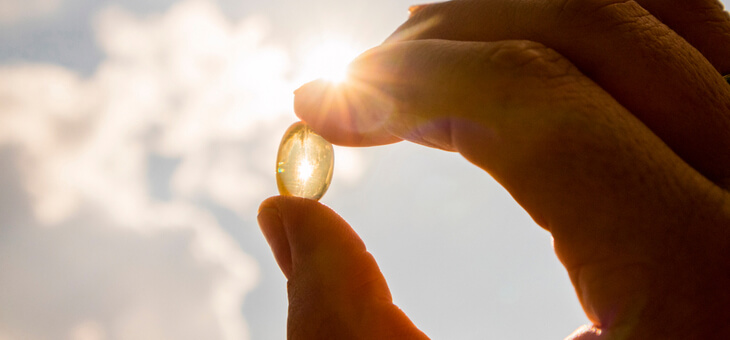Australia is well known for its abundance of sunshine. So, it’s probably surprising to hear that vitamin D deficiency commonly affects a large proportion of the population.
Although it’s nicknamed the ‘sunshine vitamin’, getting ample amounts of the nutrient from that golden light isn’t as simple as it might seem.
In fact, several factors make it hard to get enough vitamin D from the sun alone. Not to mention that excessive and regular unprotected sun exposure is something we all know to avoid.
Why do we need vitamin D?
Vitamin D helps regulate the amount of calcium and phosphate in the body.These nutrients are needed to keep bones, teeth and muscles healthy.
A lack of vitamin D can lead to bone deformities such as rickets in children and can lead to osteoporosis and muscle weakness in adults.
Definitions of vitamin D sufficiency vary but Australian organisations generally consider levels lower than 50 nmol/L as suboptimal.
Read: Five vitamins from real foods
The Australian Health Survey 2011–12 found that the highest prevalence of vitamin D deficiency occurred in winter for those living in the southeastern states of Australia, such as Victoria and the Australian Capital Territory (49 per cent compared with only 16 per cent and 13 per cent respectively in summer). Deficiency levels remain relatively low in winter for those in Queensland and the Northern Territory.
Sun exposure and vitamin D
There are a number of factors that can affect your ability to receive sufficient vitamin D from the sun, including where you live, the season, time of day, your skin colour and the amount of skin exposed.
Skin tone
Larger amounts of melanin (which is responsible for the pigmentation of skin) affects the skin’s ability to produce vitamin D from UV rays. Therefore, people with darker skin tones typically need to spend longer in the sun to get adequate vitamin D amounts.
Research has identified sun exposure guidelines for those with different skin tones:
- Those with very light to light skin likely need 10 to 15 minutes of unprotected sun exposure.
- Those with naturally tan skin can get unprotected sun for 15 to 20 minutes.
- Those with darker skin can safely get one to two hours of unprotected sun exposure.
These are guidelines though, so if you are experiencing symptoms such as fatigue, bone pain, muscle weakness, aches or cramps or mood changes, it may pay to get your vitamin D levels tested.
Read: Why vitamin D is vital for bones
Location and time of year
Unless you live close to the equator, which receives more direct sunlight, you’ll have a hard time producing enough vitamin D during the cooler months.
In summer, most people get adequate vitamin D from spending a few minutes outside. It’s important to avoid high-UV times, so try to go outside mid-morning or mid-afternoon.
In late autumn and winter in southern Australia, when the UV index is typically below 3, aim to go outside in the middle of the day for some vitamin D. If you can, leave some skin uncovered.
Wearing SPF
Slip, slop, slap has been drilled into all of us from a young age. However, wearing sunscreen can block the very rays your skin needs to absorb to produce vitamin D.
During sun exposure, the sun’s ultraviolet B (UVB) rays interact with a protein called 7-DHC in the skin, converting it into vitamin D3, the active form of vitamin D.
When used properly, a sunscreen with an SPF of 30 absorbs around 95 per cent of solar UVB radiation.
Remember, sun protection is recommended when the UV Index is 3 or above, or when spending extended periods of time outdoors. Sunscreen should be incorporated into your daily morning routine on these days.
Just a few minutes of uncovered sun exposure is adequate on most days.
Air pollution
Studies show that high levels of atmospheric pollution can reduce ground levels of UVB significantly. The particles that make up air pollution can absorb the sun’s UV rays before they have a chance to reach your skin.
So, living in a polluted city can be one of the main reasons for vitamin D deficiency.
Read: Could vitamin D ease arthritis?
Your age
Ageing reduces vitamin D production in the skin. In fact, we make four times less vitamin D in the skin over the age of 60 than in our 20s.
If you are deficient in vitamin D, you may want to consider talking to your GP about incorporating a supplement into your daily routine.
Always follow sun-safe guidelines. Too much sun can increase your risk of skin cancer and may even cause the vitamin D in your skin to break down.
Do you take vitamin D supplements? Do you get your levels checked? Share your thoughts in the comments section below.
If you enjoy our content, don’t keep it to yourself. Share our free eNews with your friends and encourage them to sign up.
Disclaimer: This article contains general information about health issues and is not advice. For health advice, consult your medical practitioner.

